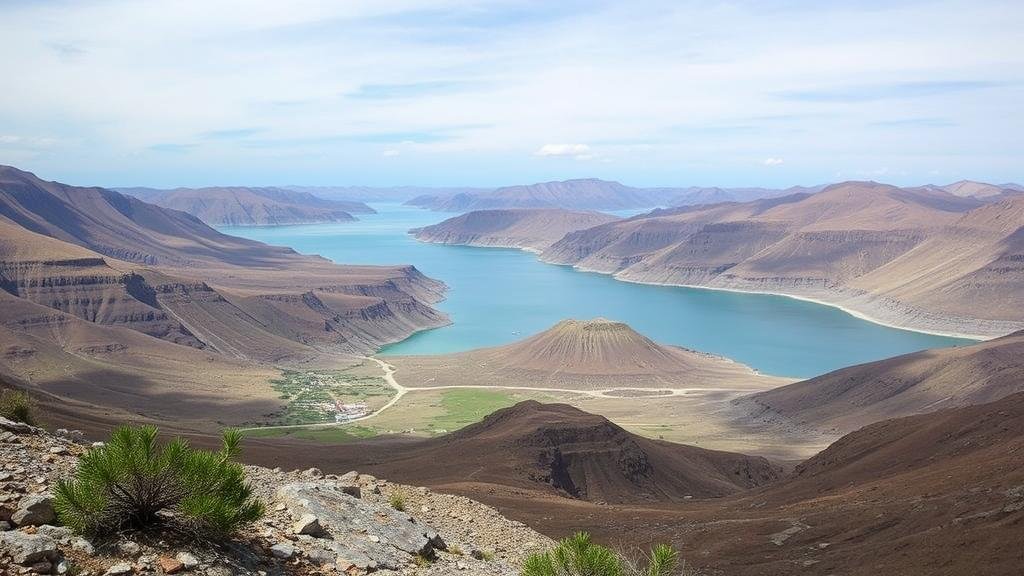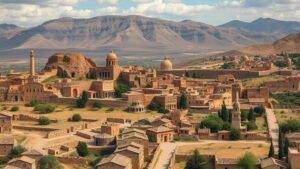Exploring the high-altitude lakes of the Andes for signs of ancient cities linked to water deities.
Exploring the High-Altitude Lakes of the Andes for Signs of Ancient Cities Linked to Water Deities
The Andes mountain range, stretching over 7,000 kilometers through seven countries in South America, is not only renowned for its breathtaking landscapes but also for its rich history intertwined with ancient civilizations. At high altitudes, these lakes have become focal points for archaeologists and historians exploring the cultural significance of water in Andean societies, often revered as home to powerful water deities. This article delves into the exploration of high-altitude lakes in the Andes, their connections to ancient cities, and the role of water deities in Andean culture.
The Geographic Significance of Andean Lakes
High-altitude lakes are scattered across the Andean mountains, with some of the most notable including Lake Titicaca, Lake Poopó, and Laguna Miscanti. Lake Titicaca, straddling the border of Peru and Bolivia, is the largest lake in South America and one of the highest navigable lakes in the world, sitting at approximately 3,812 meters (12,507 feet) above sea level. The region surrounding this lake is rich in archaeological sites that have been long associated with the Tiwanaku and Inca civilizations, both of which held water in deep reverence.
Connection to Ancient Civilizations
Andean civilizations viewed water not only as a vital resource for agriculture and survival but also as a divine element connected to their cosmology. For example, the Tiwanaku culture, which flourished between 400 and 1000 A.D. near Lake Titicaca, constructed multiple ceremonial sites and agricultural platforms showing advanced engineering that exploited the lake’s water resources. These sites often feature intricate stonework, possibly linked to water rituals.
Archaeological excavations at these high-altitude lakes have uncovered evidence of settlements that relied heavily on both agriculture and fishing. The pre-Columbian peoples fashioned complex irrigation systems to channel water from the lakes into their fields, which is a testament to their intimate relationship with their environment. For example, the Inca civilization, which rose to prominence in the 15th century, created a sophisticated network of aqueducts that symbolized not only practical utility but also a spiritual connection to their water deities.
Water Deities in Andean Belief Systems
In Andean mythology, water deities played a crucial role in agricultural cycles and societal well-being. The Aymara and Quechua people, prominent indigenous groups in the Andes, worshipped gods such as the Ekeko – a deity that represented abundance and fertility, often associated with the life-giving properties of water. Rituals and offerings were made at lakes to appease these deities and ensure favorable conditions for crops. Researchers have found artifacts near these lakes such as ceramic figurines and offerings made of llama fat, which signify the importance of these rituals.
Contemporary Explorations and Discoveries
Recent archaeological investigations, particularly in the last two decades, have focused on high-altitude lakes, using modern technologies like LIDAR (Light Detection and Ranging) to unveil hidden structures beneath thick vegetation. For example, archaeological teams have employed these techniques around Lake Poopó to uncover ruins of ancient settlements that may have ties to the regions water deities.
Also, a study published in the journal Nature highlighted findings of ancient agricultural terraces along lakes in Perus Department of Ancash, suggesting sophisticated land management practices that thrived on the regions freshwater bodies. With rising interest in sustainable water management, researchers also draw parallels between these ancient practices and contemporary ecosystems, emphasizing the need for conserving these vital water sources.
Real-World Applications and Preservation Efforts
Explorations of high-altitude lakes yield insights that extend beyond archaeological curiosity. lessons from ancient Andean water management practices inform modern strategies for dealing with climate change and water scarcity, as these societies faced challenges similar to those we encounter today. The Andean region, particularly vulnerable to the effects of climate change, can benefit from a revival of traditional knowledge relating to water conservation and sustainable agriculture.
Also, the tourism sector is slowly turning its attention to these high-altitude lakes, with the promise that responsible ecotourism could aid in preserving the cultural and environmental integrity of the areas around them. By fostering awareness about the rich history intertwining these lakes with ancient cultures, visitors can better appreciate the significance of water in the Andes.
Conclusion and Actionable Takeaways
The exploration of high-altitude lakes in the Andes uncovers more than just remnants of past civilizations; it narrates a story of humanitys deep connection to water and the reverence for its life-giving properties. As we venture into this field, it is essential to:
- Support archaeological efforts that respect and preserve indigenous cultures and traditions.
- Promote sustainable tourism practices that contribute to the conservation of Andean ecosystems.
- Encourage educational programs that emphasize the importance of ancient water management techniques in contemporary society.
By understanding the cultural significance of water and its deities in ancient Andean civilizations, we can foster a greater appreciation for both the past and our future stewardship of this precious resource.



